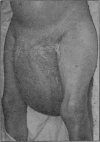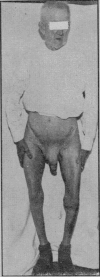Full text
PDF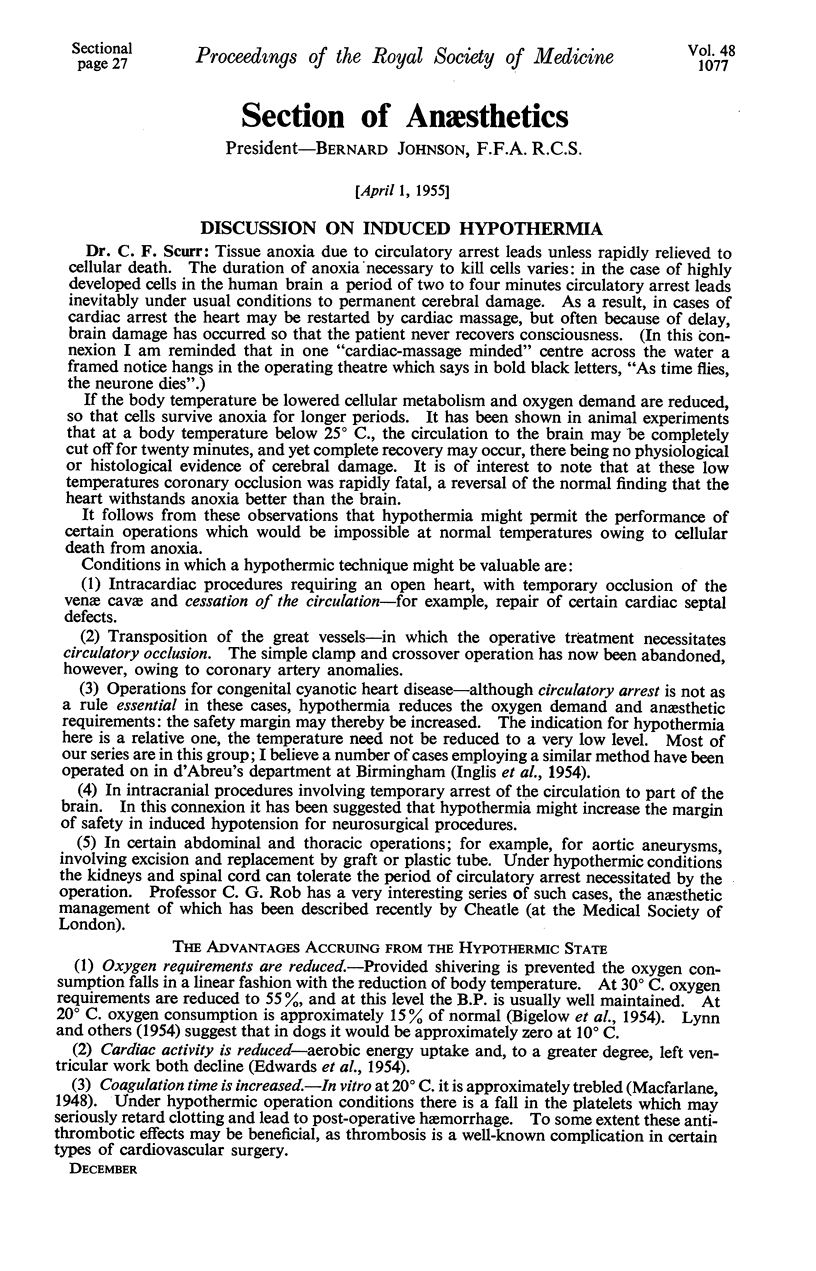
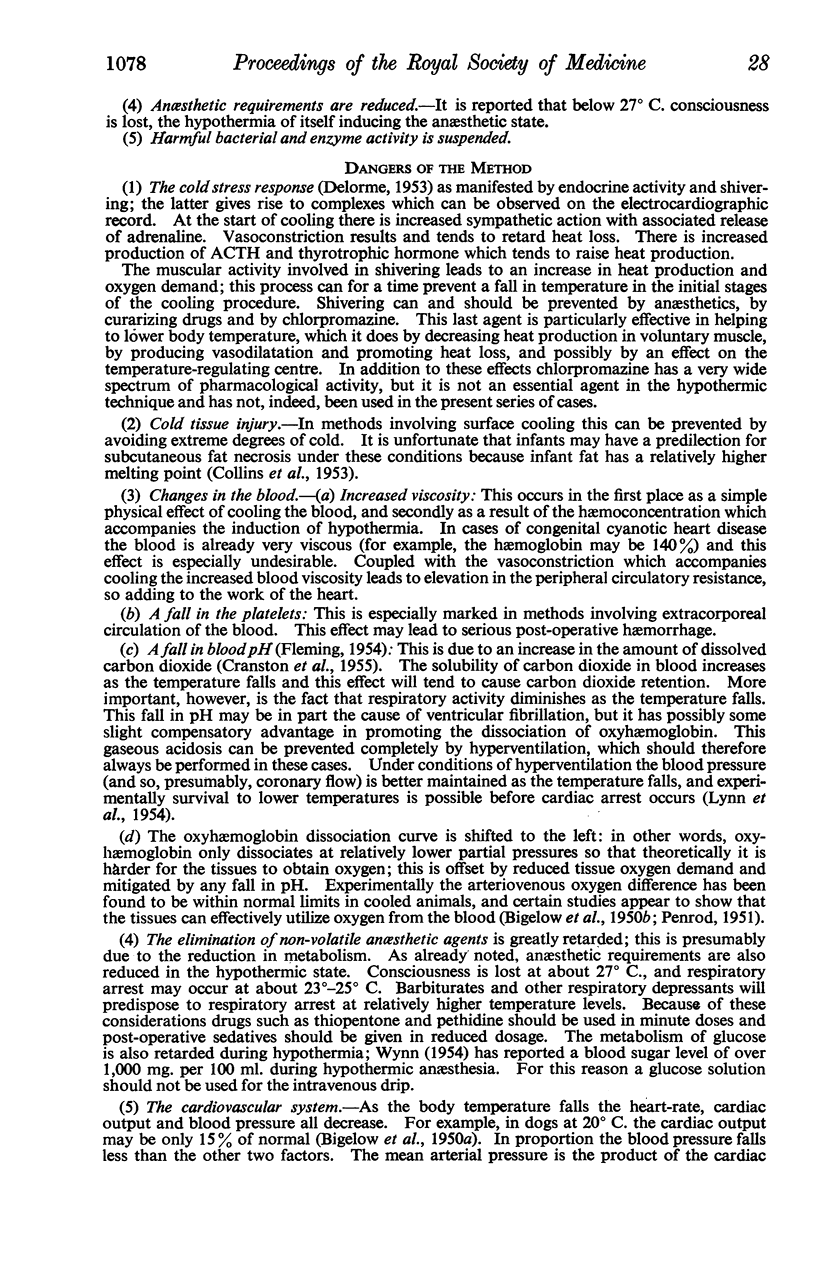
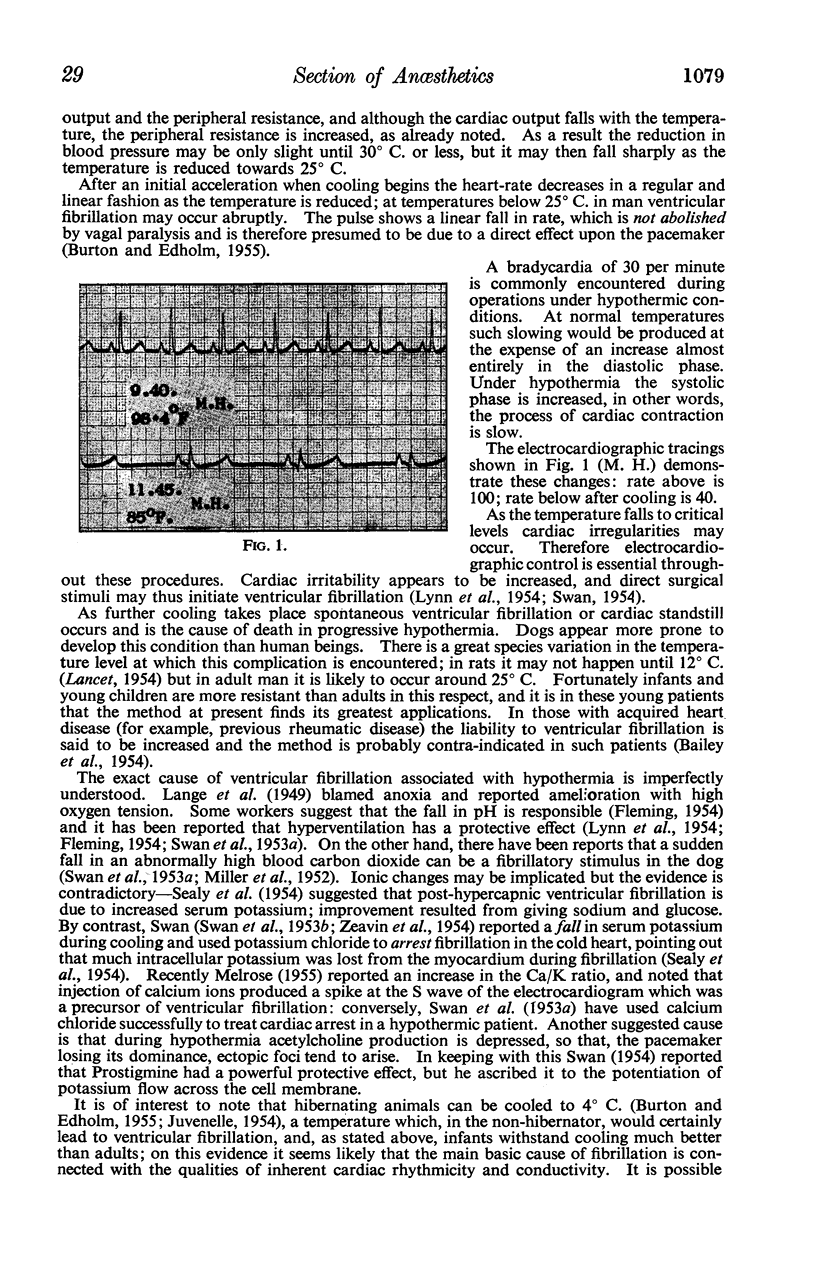
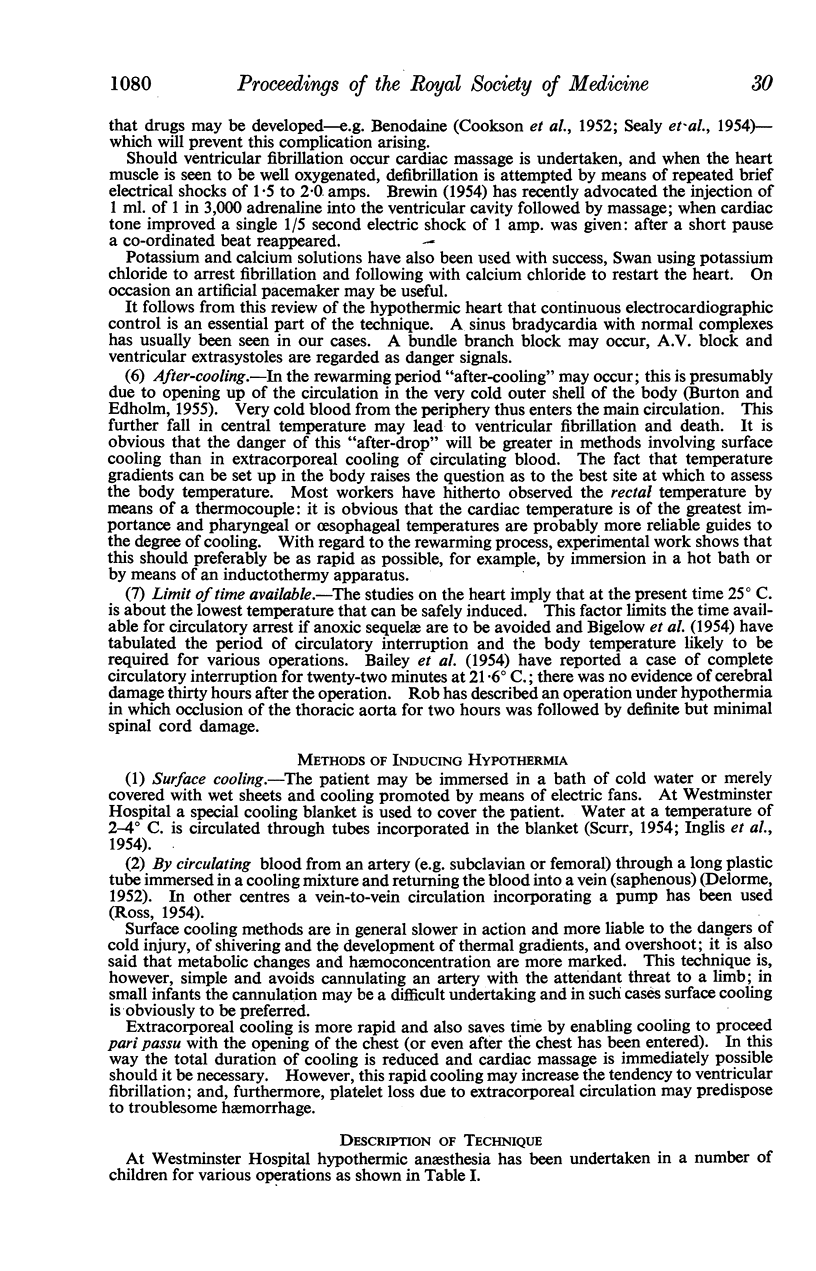
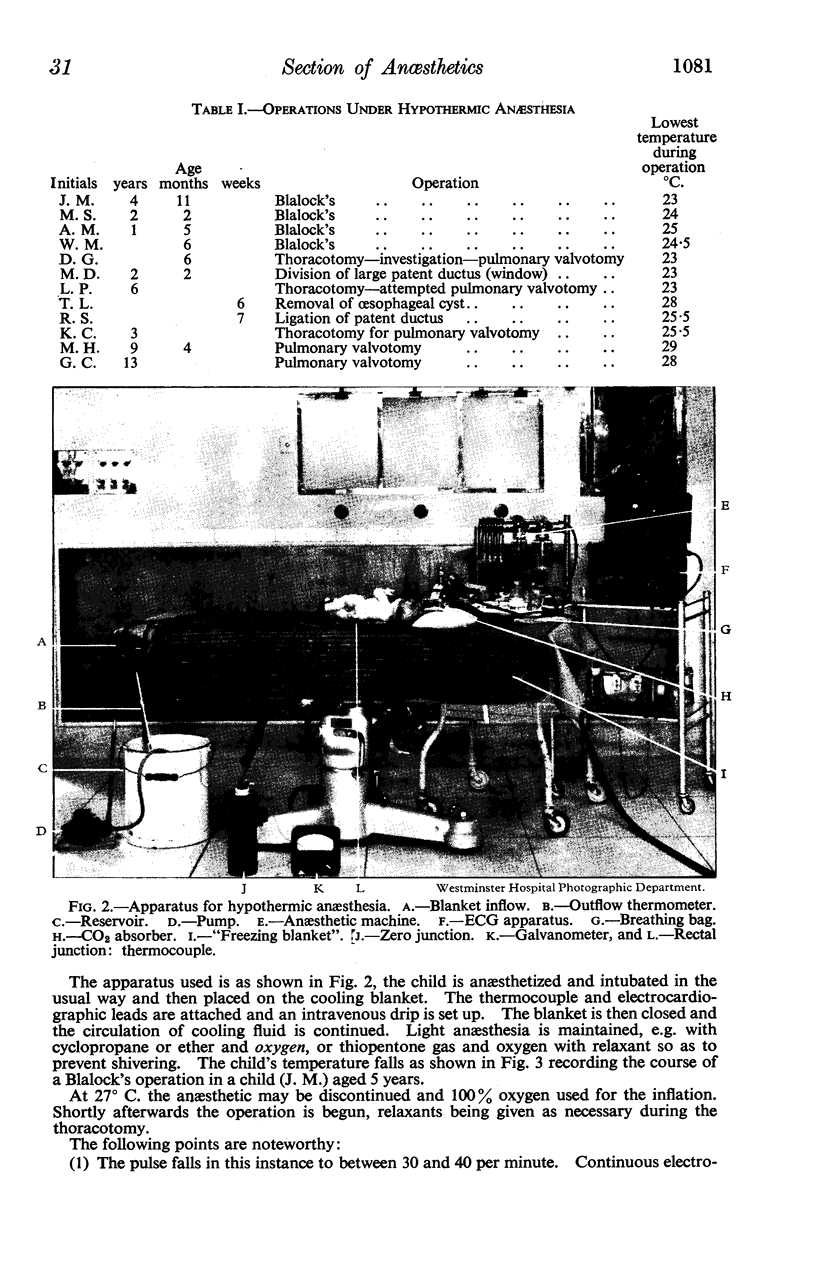
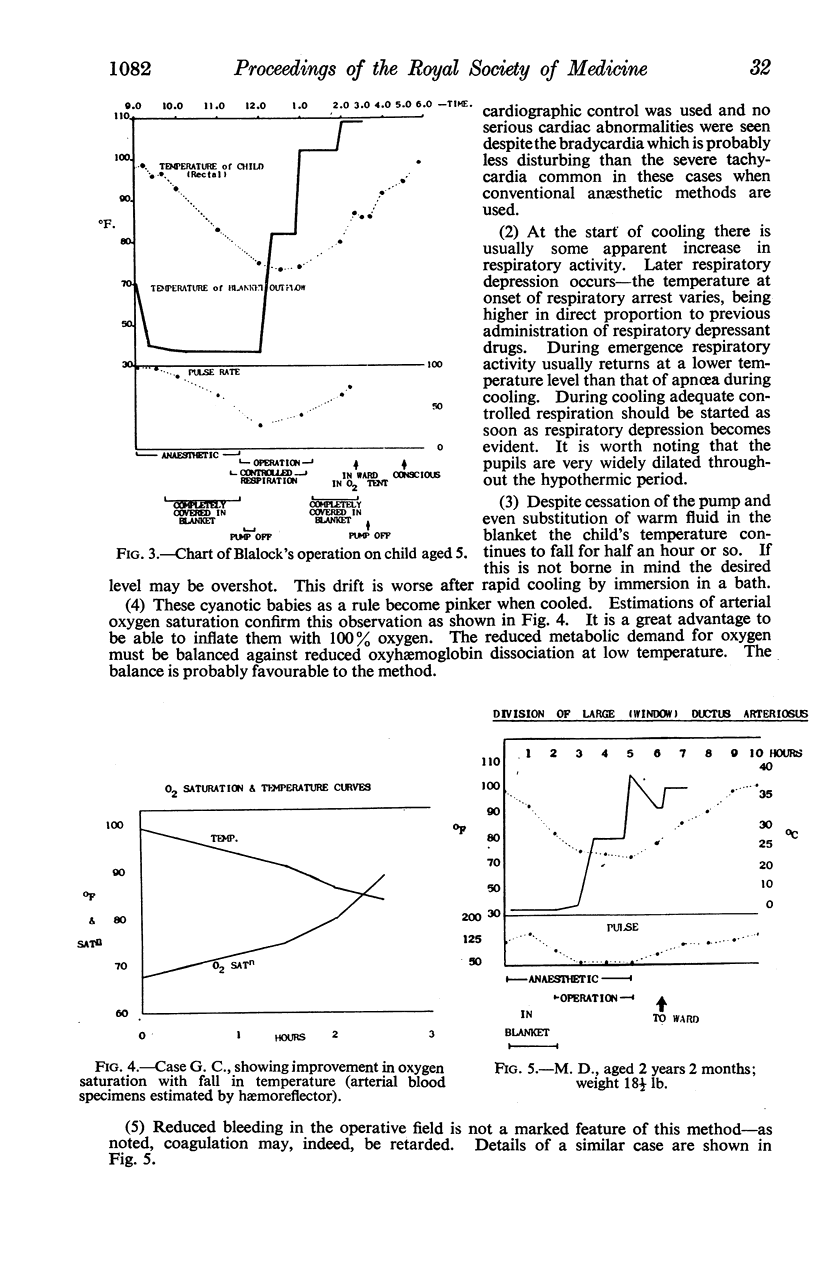
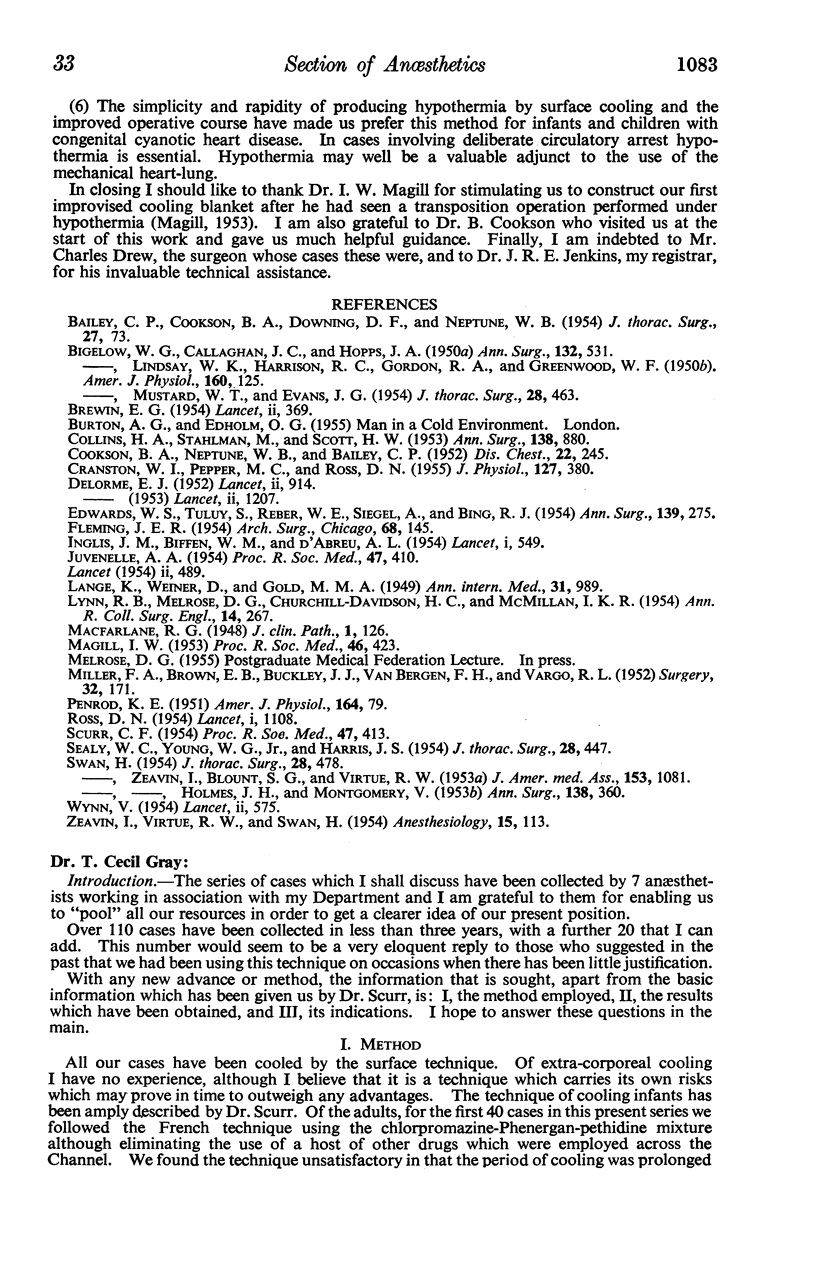
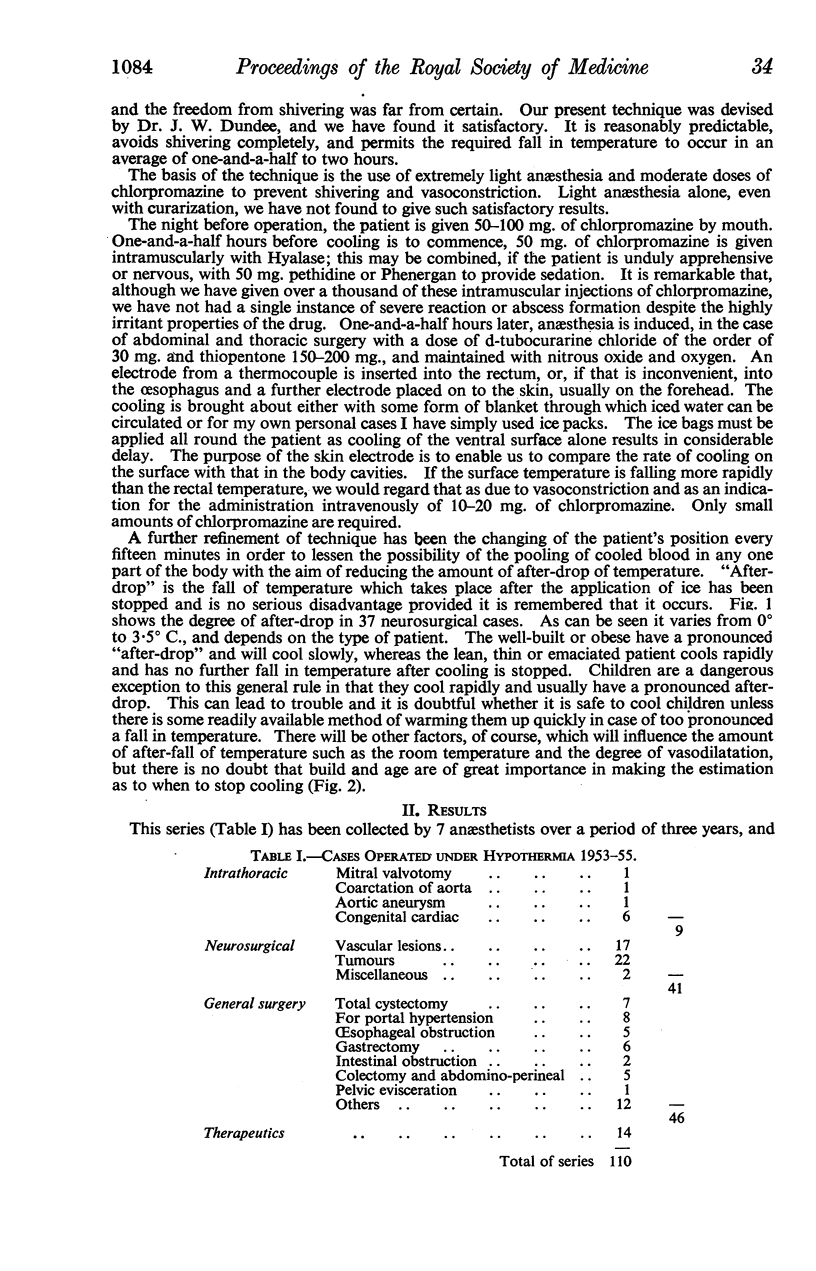
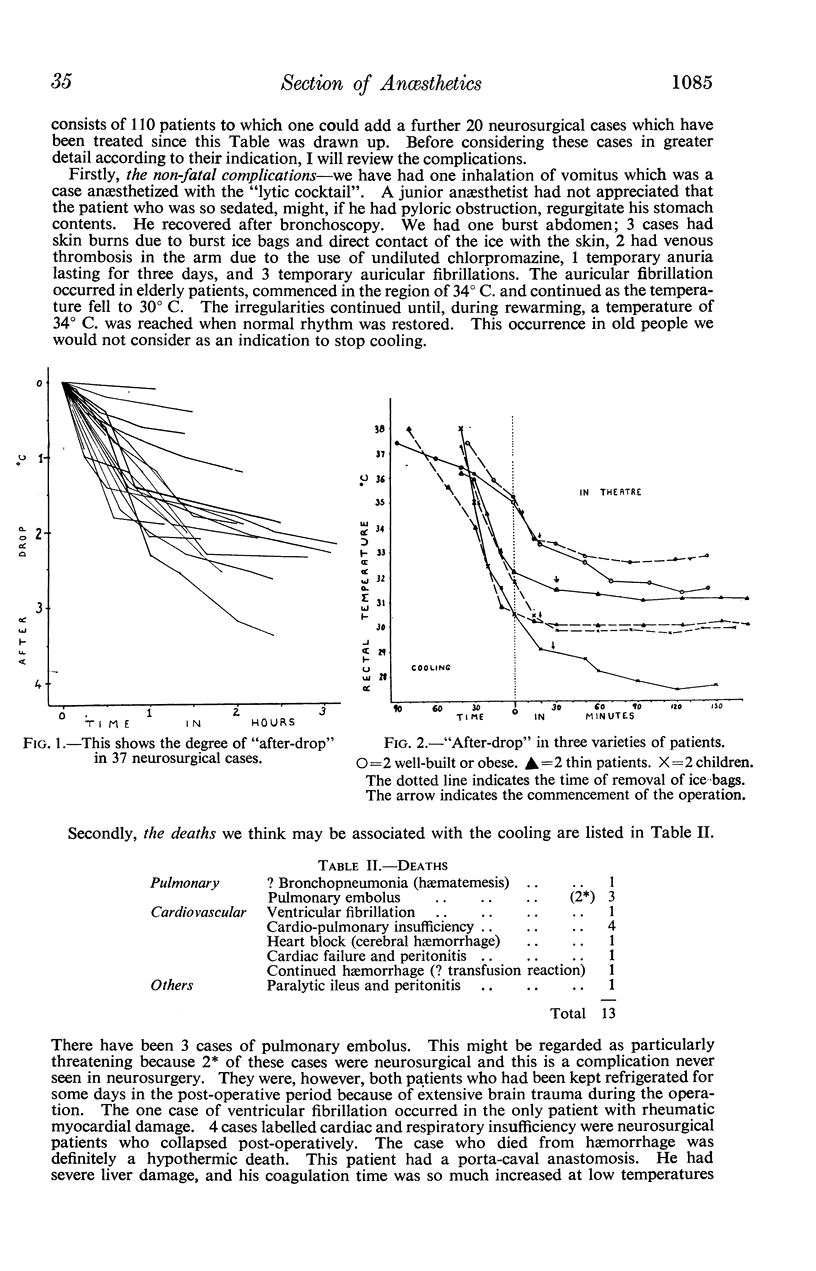
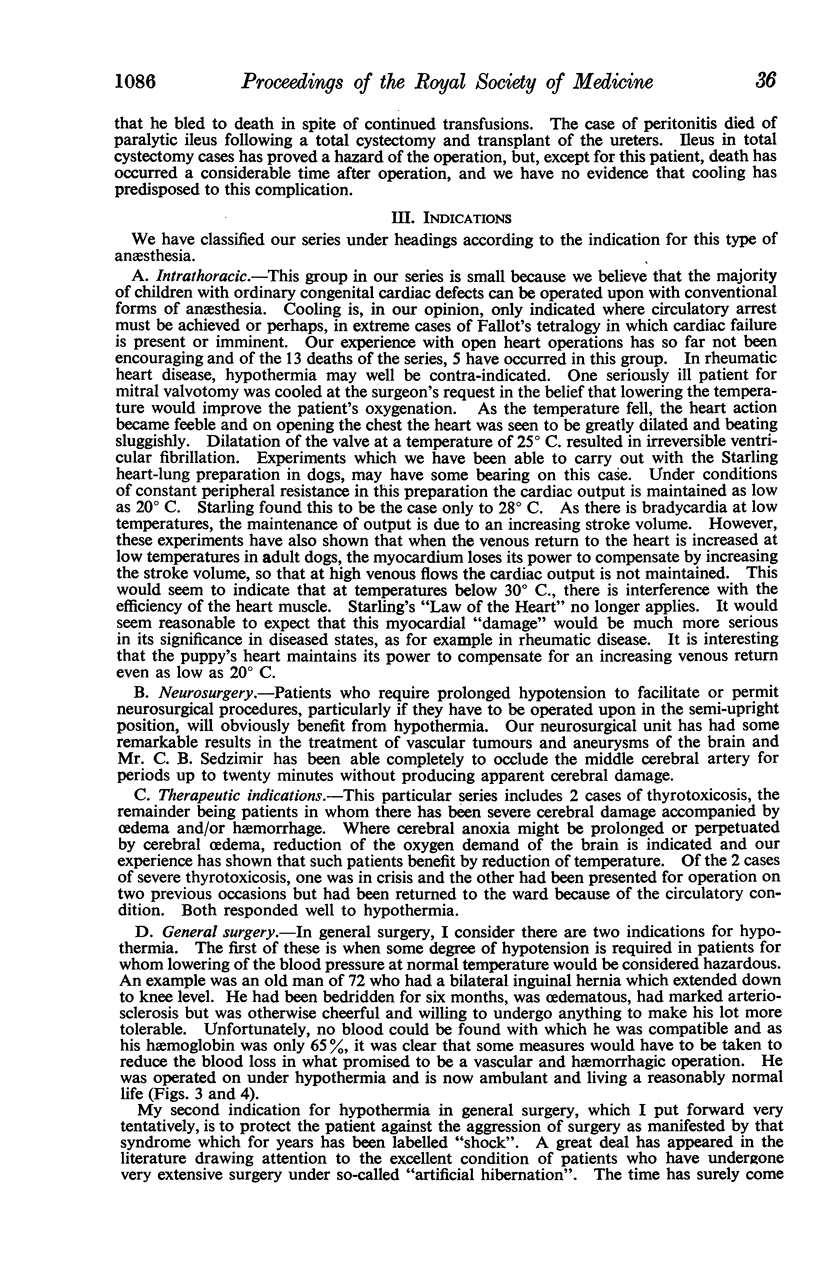
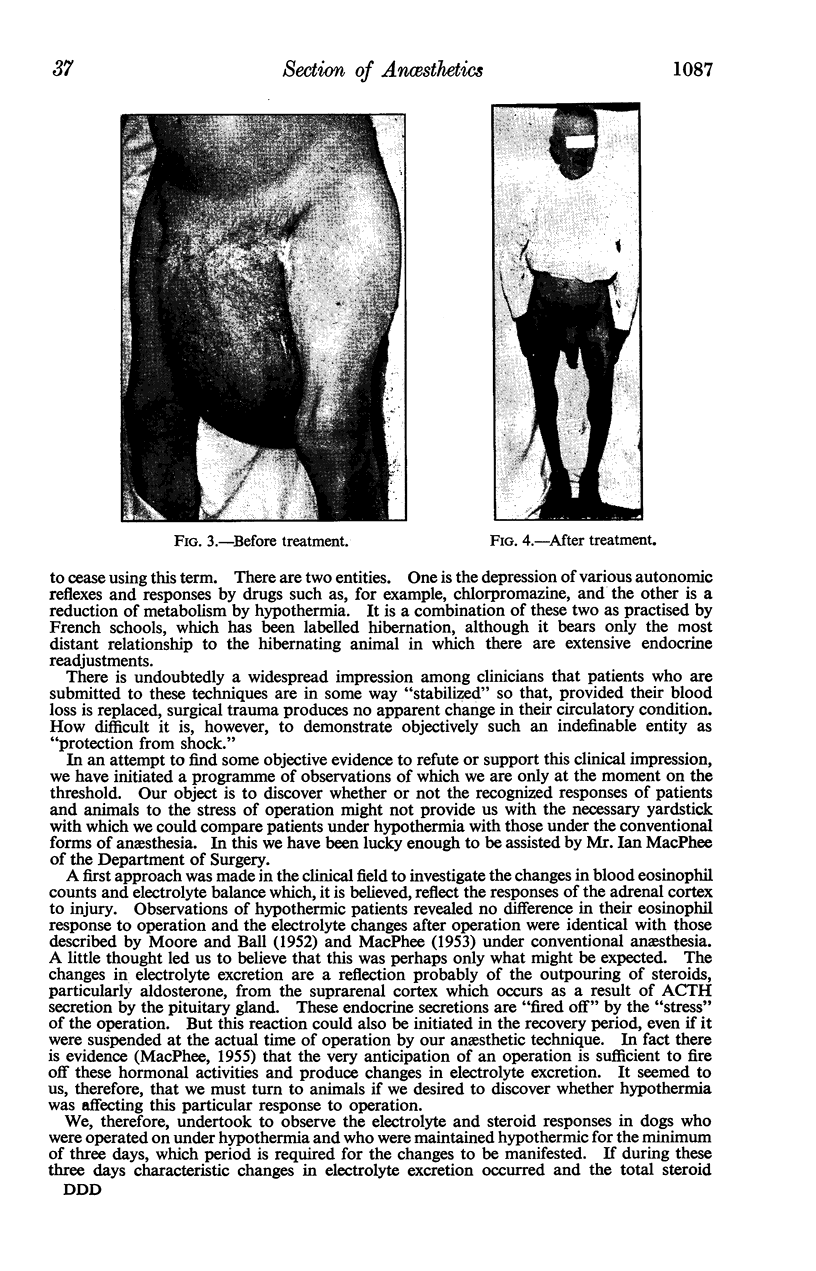
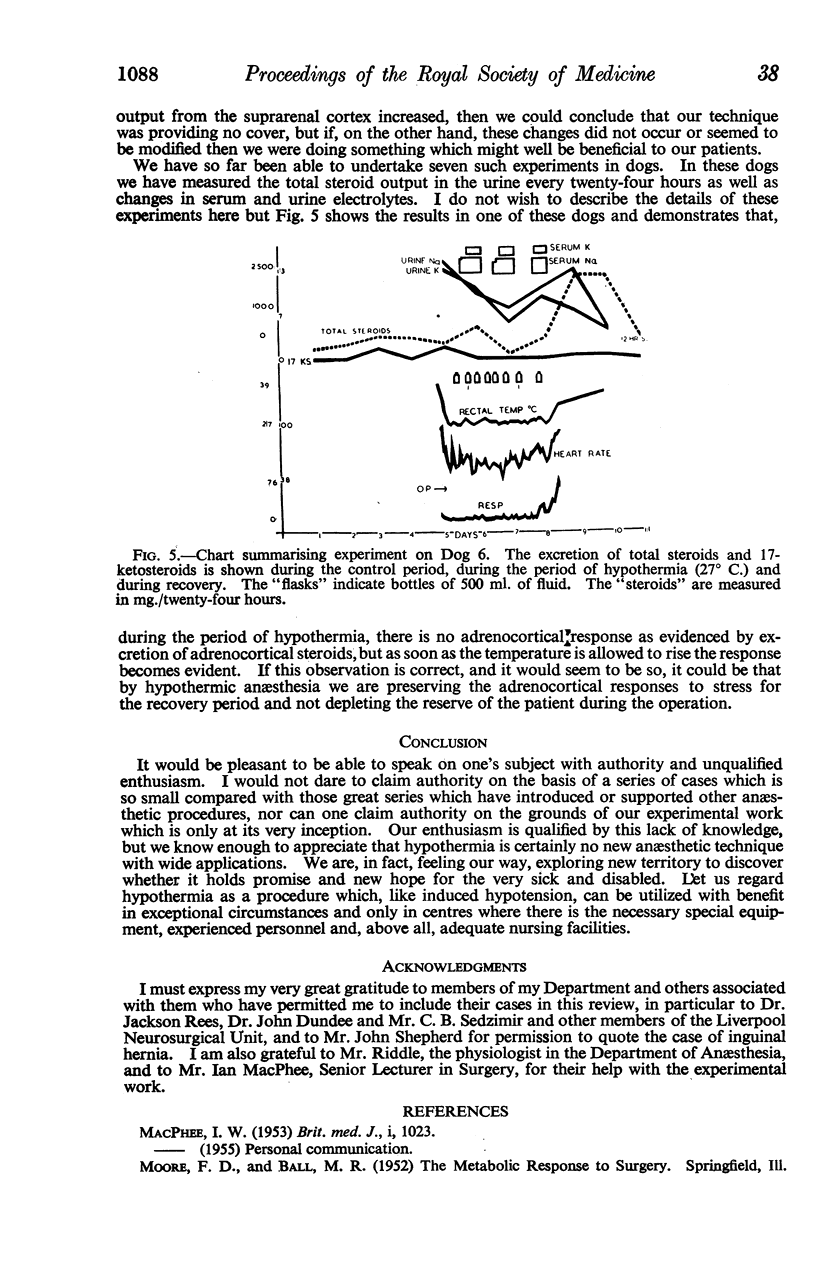
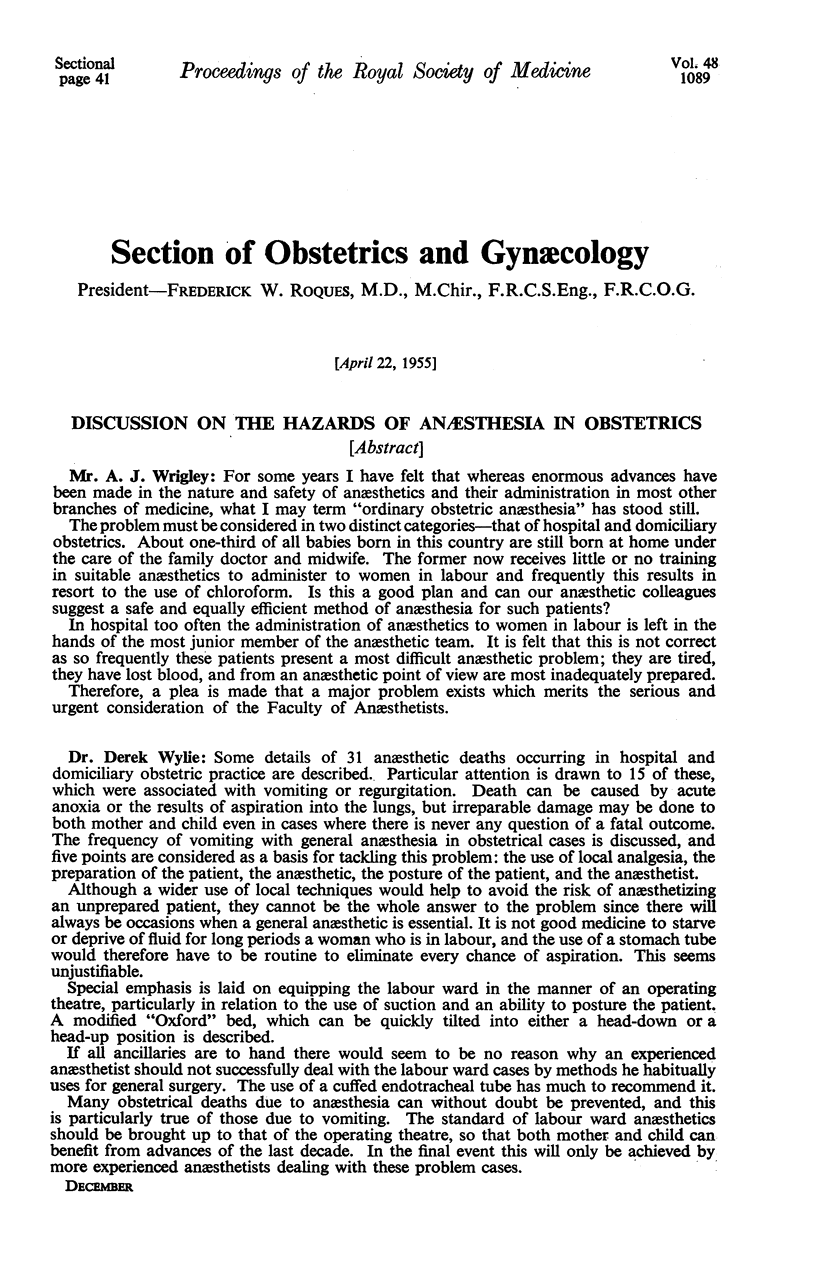
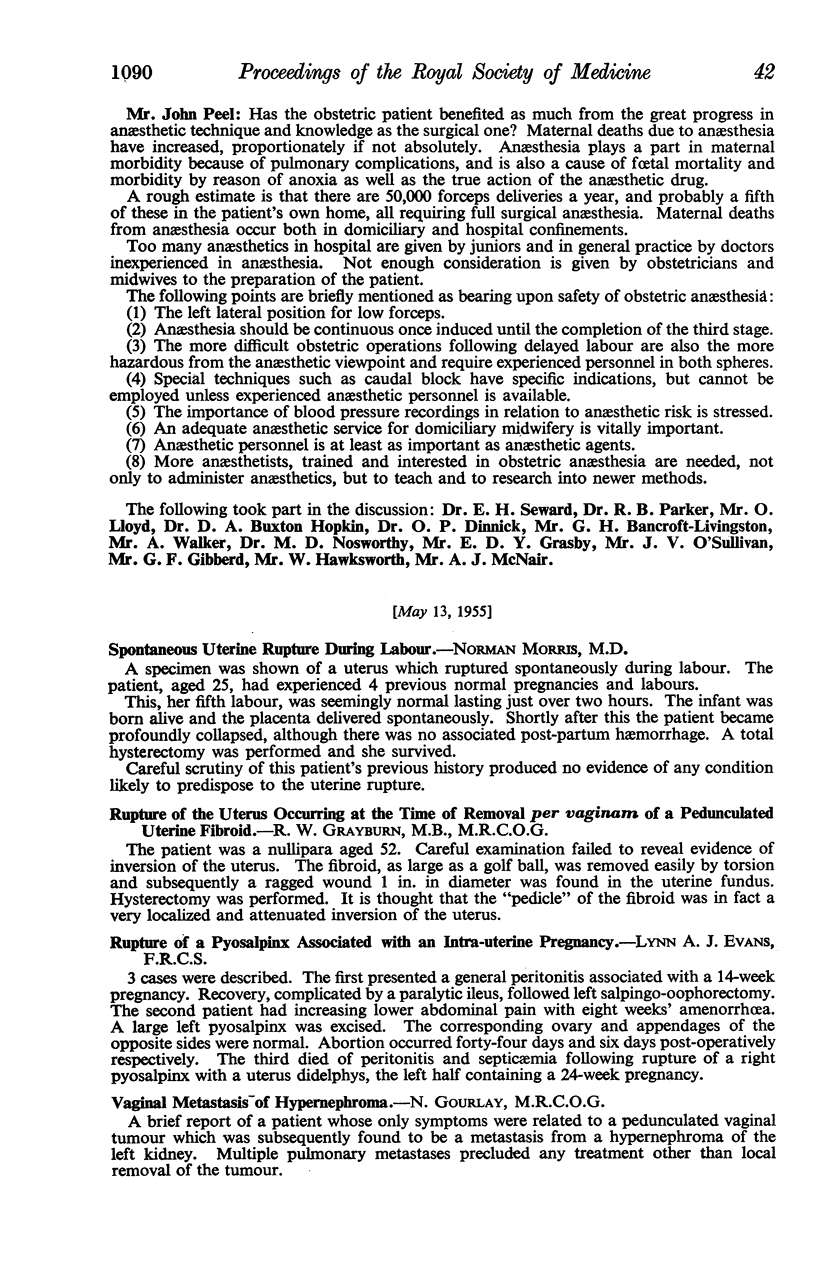
Images in this article
Selected References
These references are in PubMed. This may not be the complete list of references from this article.
- BAILEY C. P., COOKSON B. A., DOWNING D. F., NEPTUNE W. B. Cardiac surgery under hypothermia. J Thorac Surg. 1954 Jan;27(1):73–95. [PubMed] [Google Scholar]
- BIGELOW W. G., CALLAGHAN J. C., HOPPS J. A. General hypothermia for experimental intracardiac surgery; the use of electrophrenic respirations, an artificial pacemaker for cardiac standstill and radio-frequency rewarming in general hypothermia. Ann Surg. 1950 Sep;132(3):531–539. doi: 10.1097/00000658-195009000-00018. [DOI] [PMC free article] [PubMed] [Google Scholar]
- BIGELOW W. G., MUSTARD W. T., EVANS J. G. Some physiologic concepts of hypothermia and their applications to cardiac surgery. J Thorac Surg. 1954 Nov;28(5):463–480. [PubMed] [Google Scholar]
- BREWIN E. G. Defibrillation of the ventricles in hypothermia. Lancet. 1954 Aug 21;267(6834):369–369. doi: 10.1016/s0140-6736(54)92670-7. [DOI] [PubMed] [Google Scholar]
- BREWIN E. G. Defibrillation of the ventricles in hypothermia. Lancet. 1954 Aug 21;267(6834):369–369. doi: 10.1016/s0140-6736(54)92670-7. [DOI] [PubMed] [Google Scholar]
- COLLINS H. A., STAHLMAN M., SCOTT H. W., Jr The occurrence of subcutaneous fat necrosis in an infant following induced hypothermia used as an adjuvant in cardiac surgery. Ann Surg. 1953 Dec;138(6):880–885. doi: 10.1097/00000658-195312000-00010. [DOI] [PMC free article] [PubMed] [Google Scholar]
- COOKSON B. A., NEPTUNE W. B., BAILEY C. P. Hypothermia as a means of performing intracardiac surgery under direct vision. Dis Chest. 1952 Sep;22(3):245–260. doi: 10.1378/chest.22.3.245. [DOI] [PubMed] [Google Scholar]
- CRANSTON W. I., PEPPER M. C., ROSS D. N. Carbon dioxide and control of respiration during hypothermia. J Physiol. 1955 Feb 28;127(2):380–389. doi: 10.1113/jphysiol.1955.sp005264. [DOI] [PMC free article] [PubMed] [Google Scholar]
- DELORME E. J. Experimental cooling of the blood-stream. Lancet. 1952 Nov 8;2(6741):914–915. doi: 10.1016/s0140-6736(52)91278-6. [DOI] [PubMed] [Google Scholar]
- EDWARDS W. S., TULUY S., REBER W. E., SIEGEL A., BING R. J. Coronary blood flow and myocardial metabolism in hypothermia. Ann Surg. 1954 Mar;139(3):275–281. doi: 10.1097/00000658-195403000-00003. [DOI] [PMC free article] [PubMed] [Google Scholar]
- FLEMING R. Acid-base balance of the blood in dogs at reduced body temperature. AMA Arch Surg. 1954 Feb;68(2):145–152. doi: 10.1001/archsurg.1954.01260050147003. [DOI] [PubMed] [Google Scholar]
- INGLIS J. M., BIFFEN W. H., D'ABREU A. L. A convenient apparatus for providing controlled hypothermia. Lancet. 1954 Mar 13;266(6811):549–550. doi: 10.1016/s0140-6736(54)91312-4. [DOI] [PubMed] [Google Scholar]
- JUVENELLE A. A. Observations on hypothermia. Proc R Soc Med. 1954 Jun;47(6):410–415. [PMC free article] [PubMed] [Google Scholar]
- LANGE K., WEINER D., GOLD M. M. A. Studies on the mechanism of cardiac injury in experimental hypothermia. Ann Intern Med. 1949 Dec;31(6):989–1002. doi: 10.7326/0003-4819-31-6-989. [DOI] [PubMed] [Google Scholar]
- LYNN R. B., MELROSE D. G., CHURCHILL-DAVIDSON H. C., McMILLAN I. K. Hypothermia: further observations on surface cooling. Ann R Coll Surg Engl. 1954 Apr;14(4):267–275. [PMC free article] [PubMed] [Google Scholar]
- MACPHEE I. W. Metabolic changes associated with operation. Br Med J. 1953 May 9;1(4818):1023–1028. doi: 10.1136/bmj.1.4818.1023. [DOI] [PMC free article] [PubMed] [Google Scholar]
- MILLER F. A., BROWN E. B., BUCKLEY J. J., VAN BERGEN F. H., VARCO R. L. Respiratory acidosis; its relationship to cardiac function and other physiologic mechanisms. Surgery. 1952 Aug;32(2):171–183. [PubMed] [Google Scholar]
- PENROD K. E., FLYNN J. Cardiac oxygenation during severe hypothermia in dog. Am J Physiol. 1951 Jan;164(1):79–85. doi: 10.1152/ajplegacy.1950.164.1.79. [DOI] [PubMed] [Google Scholar]
- ROSS D. N. Venous cooling: a new method of cooling the blood-stream. Lancet. 1954 May 29;266(6822):1108–1109. doi: 10.1016/s0140-6736(54)92156-x. [DOI] [PubMed] [Google Scholar]
- SEALY W. C., YOUNG W. G., Jr, HARRIS J. S. Studies on cardiac arrest: the relationship of hypercapnia to ventricular fibrillation. J Thorac Surg. 1954 Nov;28(5):447–462. [PubMed] [Google Scholar]
- SWAN H., ZEAVIN I., BLOUNT S. G., Jr, VIRTUE R. W. Surgery by direct vision in the open heart during hypothermia. J Am Med Assoc. 1953 Nov 21;153(12):1081–1085. doi: 10.1001/jama.1953.02940290013005. [DOI] [PubMed] [Google Scholar]
- SWAN H., ZEAVIN I., HOLMES J. H., MONTGOMERY V. Cessation of circulation in general hypothermia. I. Physiologic changes and their control. Ann Surg. 1953 Sep;138(3):360–376. doi: 10.1097/00000658-195313830-00009. [DOI] [PMC free article] [PubMed] [Google Scholar]
- WYNN V. Electrolyte disturbances associated with failure to metabolise glucose during hypothermia. Lancet. 1954 Sep 18;267(6838):575–578. doi: 10.1016/s0140-6736(54)90354-2. [DOI] [PubMed] [Google Scholar]
- ZEAVIN I., VIRTUE R. W., SWAN H. Cessation of circulation in general hypothermia. II. Anesthetic management. Anesthesiology. 1954 Mar;15(2):113–121. doi: 10.1097/00000542-195403000-00001. [DOI] [PubMed] [Google Scholar]





